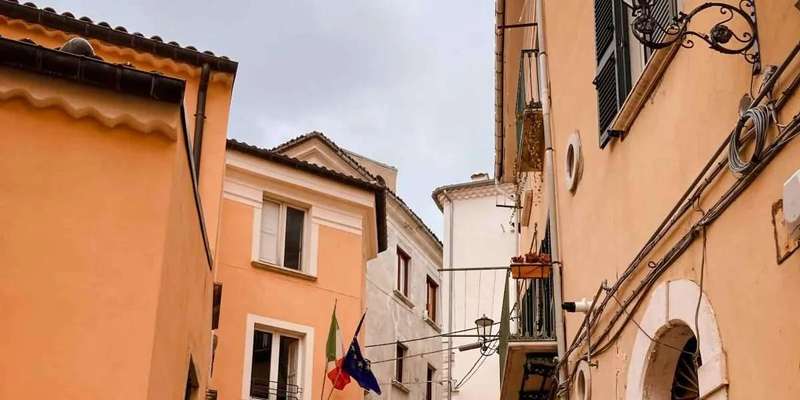- Home
- Useful Tips
- Campobasso's annual Mysteries procession
Every Corpus Christi Sunday, Campobasso transforms into a living canvas of sacred art during its centuries-old Mysteries procession. Visitors often arrive unprepared, missing key viewing opportunities or failing to grasp the event's profound cultural significance. With over 200,000 spectators crowding the narrow streets annually, poor planning can lead to obstructed views, confusion about the procession's symbolic meaning, or unnecessary discomfort during the 4-hour spectacle. The emotional weight of witnessing these elaborate 17th-century floats – each representing biblical scenes with eerily suspended children – becomes diluted without understanding the artisanship behind the 400kg structures or the local traditions governing their movement through the medieval quarter.


Navigating the crowds for perfect procession views
The Mysteries procession follows a fixed route through Campobasso's historic center, but vantage points vary dramatically in quality. Locals know the golden rule: arrive early to secure positions near Piazza Vittorio Emanuele II, where floats pause for maximum viewing time. Unlike first-time visitors who cluster near the starting point at Chiesa della Santissima Trinità, seasoned attendees position themselves along Via Mazzini where the incline creates optimal sightlines. Bring a lightweight folding stool – the wait between float arrivals can exceed 30 minutes, and cobblestones become unforgiving. For photographers, the 11am sunlight angles perfectly at Corso Bucci, illuminating the intricate details of the 'Last Supper' float as it turns toward Via Marconi. Remember that the procession moves counterclockwise, so positioning yourself after sharp turns guarantees unobstructed shots of the floats' most dramatic angles.
Decoding the symbolism behind the floating tableaux
Each of the thirteen Mysteries floats represents a theological concept through mesmerizing mechanical theater. The 'Ascension' float, for instance, uses concealed counterweights to make a child appear to levitate above the apostles – a technique perfected by local craftsmen since 1748. What most miss are the subtle regional touches: the 'Pentecost' float incorporates Molise's wheat motifs into its dove imagery, while the 'Crown of Thorns' structure sways deliberately to mimic Christ's stumbling gait. Local families pass down stories about the 'privileged' children selected to portray angels, who undergo months of balance training. Understanding these details transforms passive viewing into profound cultural engagement. The municipal office offers free booklets explaining each float's history, but these often run out by 9am – savvy visitors download the bilingual guide from Campobasso's tourism site weeks in advance.
Essential timing strategies for procession day
The procession's 10am start time is deceptive – the real action begins hours earlier. By 6:30am, locals are already placing chairs along the route (a tolerated tradition), while 7:30am marks the last chance for undisturbed photos of the floats being prepared near the Trinità church. Smart visitors use the 8-9am window to explore the rarely open Confraternity of the Mysteries workshop, where restoration techniques are demonstrated. Post-procession, most tourists leave immediately, missing the 3pm unveiling of the antique mechanisms in Piazza Prefettura. For those staying overnight, the Monday morning 'Festa del Volo' sees children from the procession tossing flower petals from balconies along Via San Leonardo – a intimate epilogue few guidebooks mention.
Beyond the procession – experiencing Campobasso's sacred heritage
The Mysteries procession represents just one thread in Campobasso's rich spiritual tapestry. Those extending their stay discover the Museo dei Misteri, open year-round with interactive exhibits on float engineering. The week before Corpus Christi, local bakeries produce 'cresce d'i Mister' – saffron buns shaped like float components. For deeper context, the Diocesan Museum's temporary exhibits (June-only) display original 18th-century blueprints alongside the jeweled vestments worn during the procession. Accommodations in the historic center like Palazzo Cannavina offer special packages including dawn access to rooftop views, while agriturismi outside town provide authentic settings to process the day's visual splendor over plates of caciocavallo cheese and Molise DOC wines.
